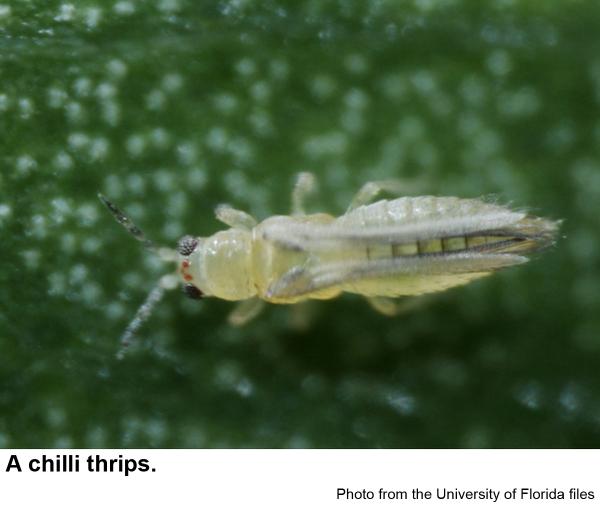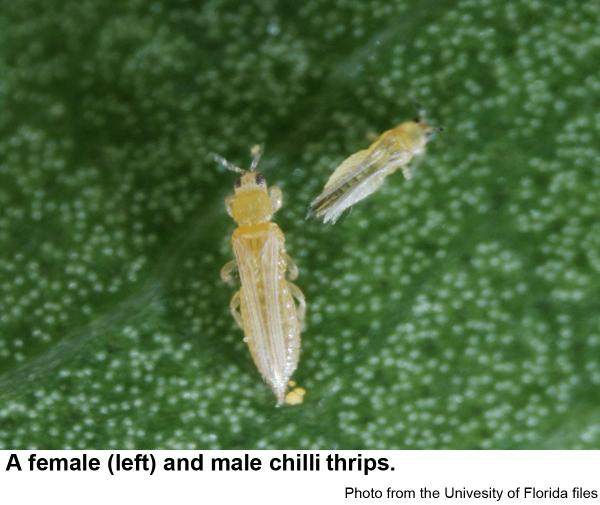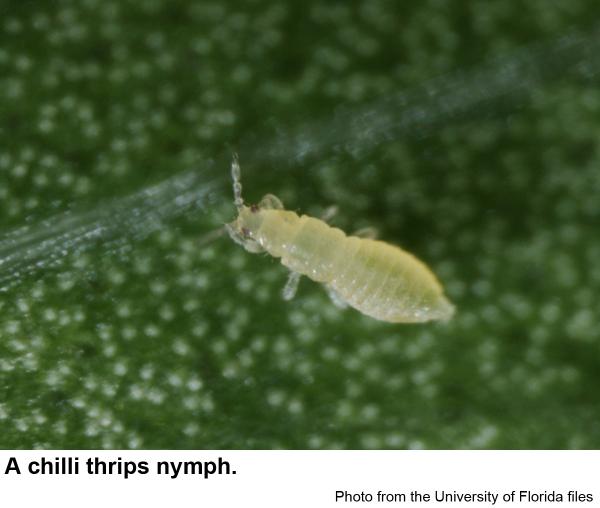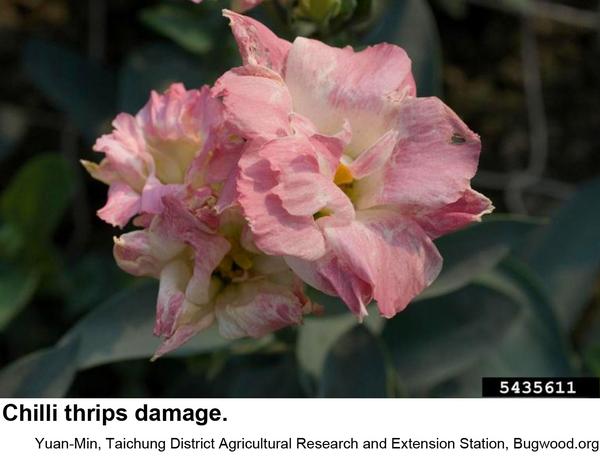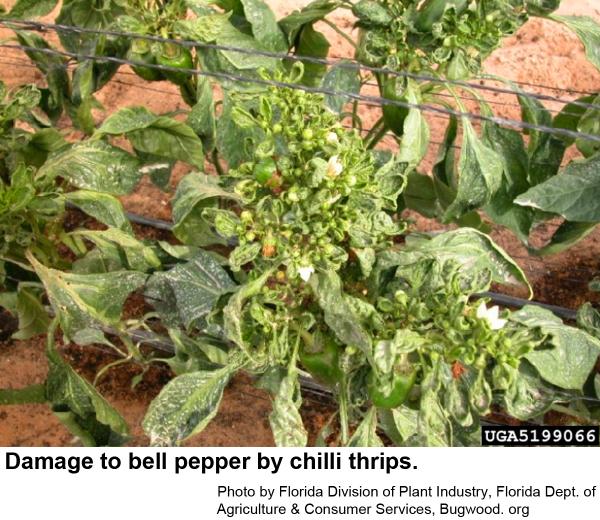Description and Biology
Chilli thrips, Scirtothrips dorsalis, are about the size of our native flower thrips (about 1/16 inch long), but are pale cream rather than amber. This species has dark gray eyes and the antennae are smokey gray beyond the base. Males are slightly smaller and paler than females. Under a microscope, the most notable character are the fringed or feather-like wings. The delicate egg is inserted completely into the plant tissue. The egg is cylindrical and kidney-shaped, with a smooth pale or yellow surface. Immature chilli thrips are whitish and resemble adults except for size, lack of wings, and red eyes. Prepupae are pale and have wing buds and antennae that are to the side or front of the head. Pupae are also pale and have longer wing buds and antennae that bend back over the head. Chilli thrips is a major pest in Florida, but it can be carried for hundreds of miles on weather fronts, so it is not surprising to see this thrips here in North Carolina, especially late in the growing season. This species probably cannot survive our winters.
Host Plants
Chilli thrips have been reported from hundreds of plant species in at least 40 plant families. They seem to be especially attracted to rose and peppers. Their feeding on foliage and flowers causes distortion, scarring, and premature leaf drop.
Residential Recommendations
Pyrethroids have never provided effective control of chilli thrips. Foliar applications of imidacloprid can provide days-long, effective control of chilli thrips supposedly without harming natural control agents excessively. Should one decide to use imidacloprid, spider mites may become a problem. Imidacloprid is available for landscape use in the garden section of most big box stores. Do not use imidacloprid on fruits, vegetables, or culinary herbs unless the formulation is labeled for that use.
Other Resources
- Biological response of chilli thrips, Scirtothrips dorsalis Hood (Thysanoptera: Thripidae), to various regimes of chemical and biorational insecticides. Seal, D. R. and V. Kumar. 2010. Crop Protection 29(11):1241-1247.
- Common name: chilli thrips, scientific name: Scirtothrips dorsalis Hood (Insecta: Thysanoptera: Thripidae). Kumar, V. et al. 2014 (revised). Featured Creatures. Entomology & Nematology, FDACS/DPI, EDIS. Publication Number: EENY-463.
- Extension Plant Pathology Publications and Factsheets
- Horticultural Science Publications
- North Carolina Agricultural Chemicals Manual
For assistance with a specific problem, contact your local N.C. Cooperative Extension Center
This Factsheet has not been peer reviewed.
Publication date: Sept. 14, 2019
Revised: June 20, 2024
Recommendations for the use of agricultural chemicals are included in this publication as a convenience to the reader. The use of brand names and any mention or listing of commercial products or services in this publication does not imply endorsement by NC State University or N.C. A&T State University nor discrimination against similar products or services not mentioned. Individuals who use agricultural chemicals are responsible for ensuring that the intended use complies with current regulations and conforms to the product label. Be sure to obtain current information about usage regulations and examine a current product label before applying any chemical. For assistance, contact your local N.C. Cooperative Extension county center.
N.C. Cooperative Extension prohibits discrimination and harassment regardless of age, color, disability, family and marital status, gender identity, national origin, political beliefs, race, religion, sex (including pregnancy), sexual orientation and veteran status.

